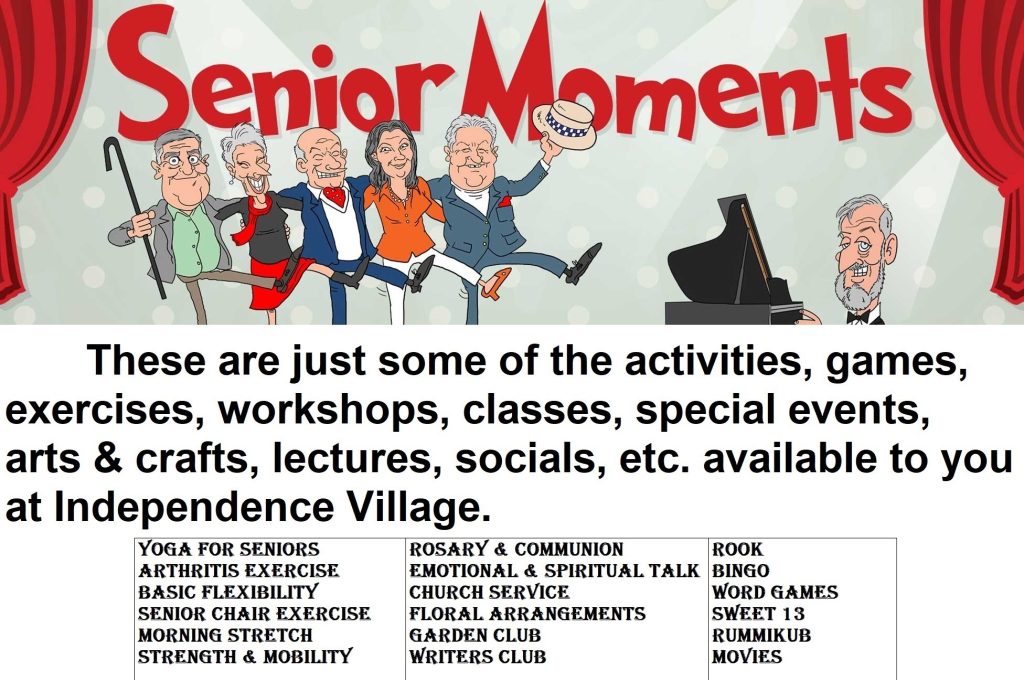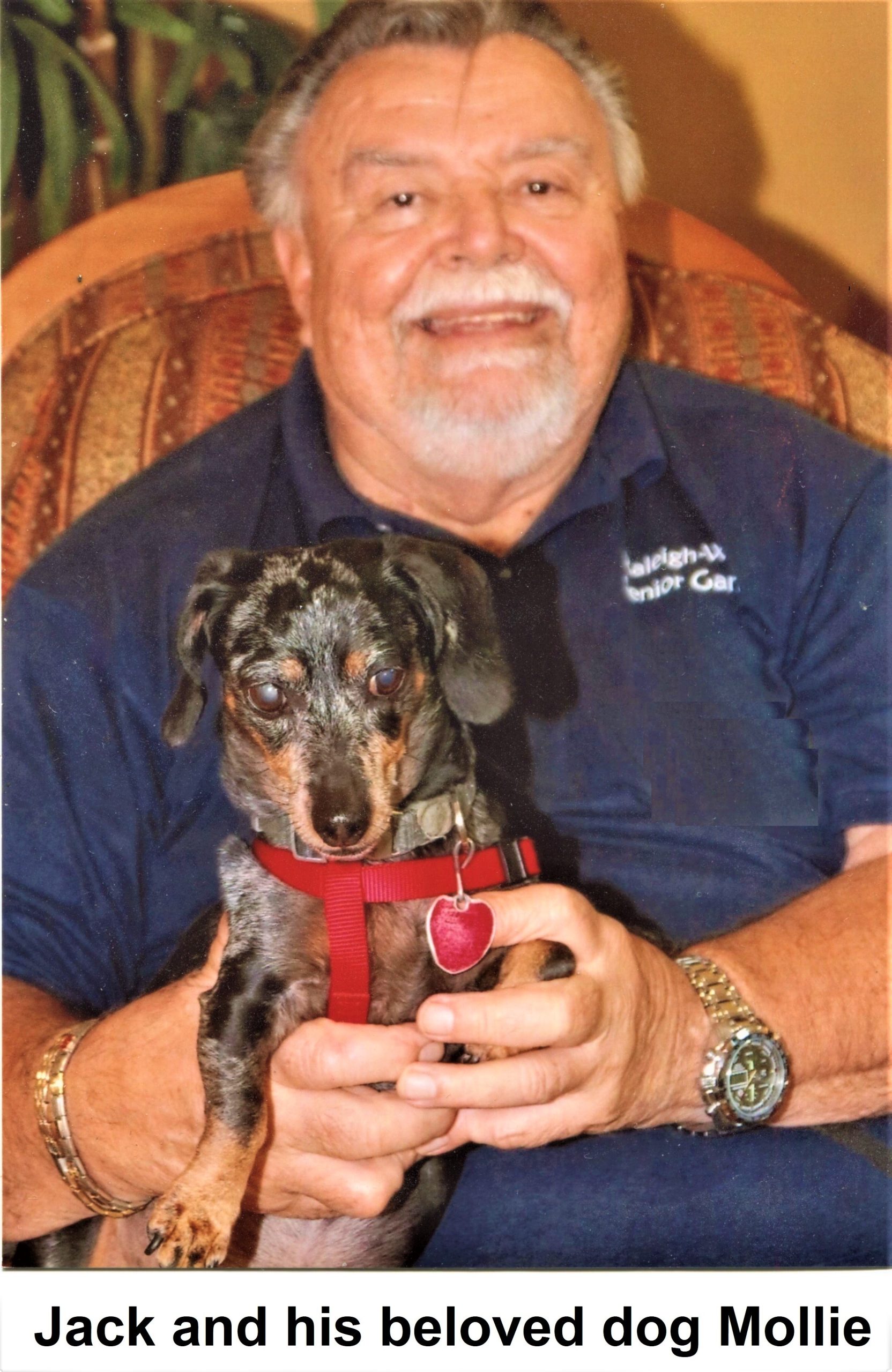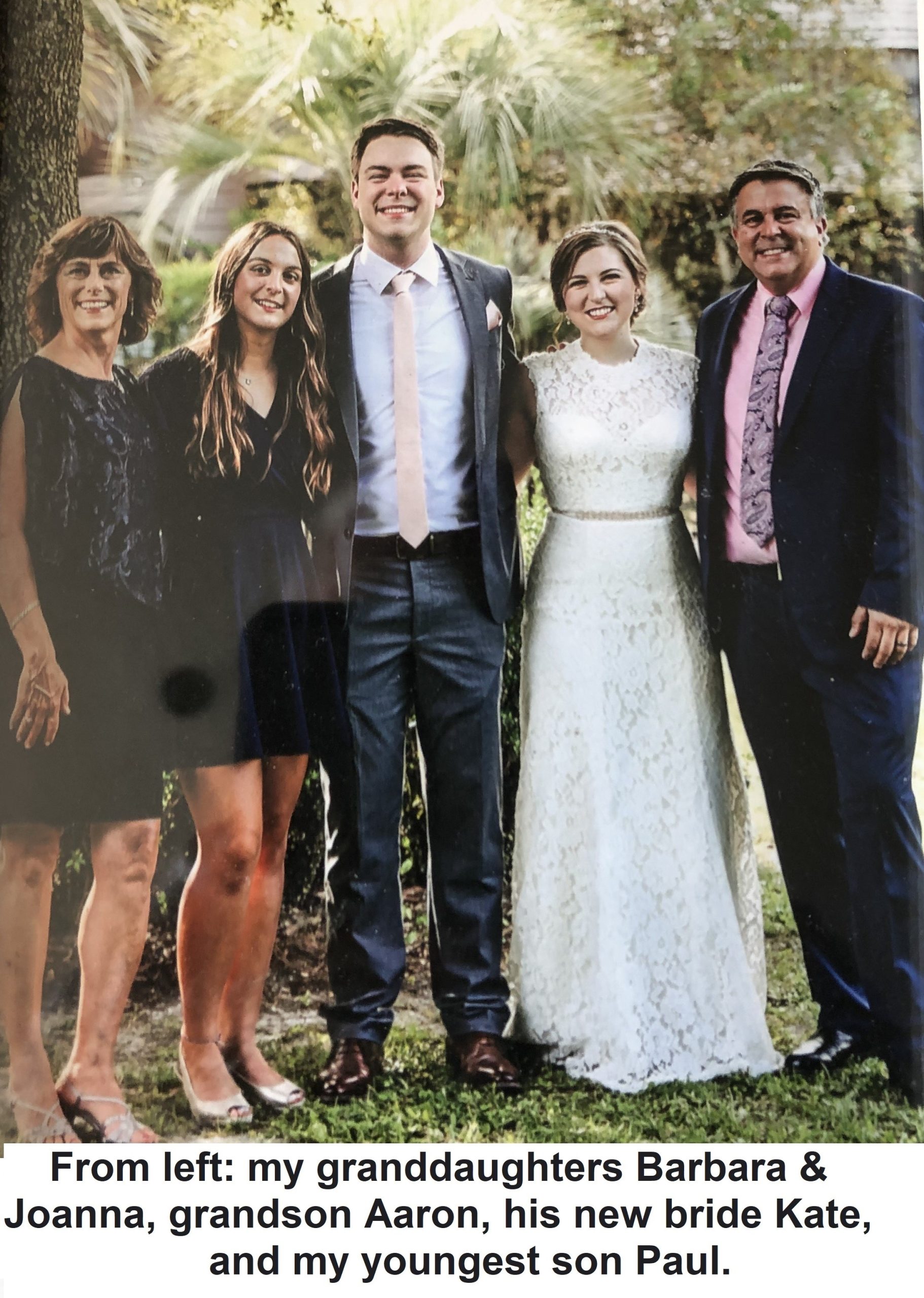THE VILLAGE TIMES
Independence Village of Olde Raleigh Resident Newsletter



John (Jack) Sobczak
by Pat Simpson

John (better known as “Jack”) Sobczak was born on January 11, 1938 in Dunkirk New York, sister city of Dunkerque, France. With a population of approximately 12,000 people, Dunkirk is the westernmost city of the state of New York, bordering Lake Erie about 45 miles south of Buffalo, N.Y.
Jack grew up in Dunkirk but during his life he has lived everywhere from Buffalo to Syracuse to New York State’s Southern Tier cities of Endwell, Endicott, Vestal, Binghamton, and Johnson City. And he even sailed the seas as a Navy Warrant Officer on the U.S. Navy’s aircraft carrier USS Midway.
But I’m getting ahead of myself.
“Both my father and my mother,” says Jack, “are from Dunkirk but my mother’s ancestors are Italians from Naples, Italy. Her grandfather outlived four wives. My father (whose ancestors are from Poland) worked very hard in the local steel steel mill all the time. My uncle Steve worked hard as well but he also raised and raced homing pigeons – normally kept in half-a-dozen coops in his area of town.
“It seems I have always been interested in things musical. In high school I gave a clarinet solo on stage in front of a 17-piece band. I remember I was wearing a white jacket. I also played the clarinet in the Dunkirk High School band as well as the bugle in the drum and bugle Corps for Dunkirk’s Hose 4 Volunteer Fire Company. It seemed there was always a festival going on nearby so our marching band marched with other marchers; we always got together after practices and had Irish stew mixed with lots of fun! I enjoyed my childhood. I played baseball with my friends and at one time volunteered in the Civil Air Patrol watching and listening for airplanes.
“I graduated from Dunkirk’s Cardinal Mindszenty high school in 1955. For the next two years I attended the Bryant and Stratton Business Institute in Buffalo (known today as Bryant & Stratton College (BSC)), where I earned a Certificate of Accelerated Accounting before joining the U.S. Navy in 1957.
“I met my beautiful future wife, Geri (Geraldine) Hodskins, on a blind date on July 1957. One of three girls, she was born in 1941 in Buffalo and, like me, was not from a wealthy family. Over time we fell in love and, on April 28, 1962, we got married at St. Terese R.C. Church in south Buffalo.
She was a good Navy wife and loved living on base because it offered good security for the children and she could live in a community of other Navy wives who all accepted each other.

“We had three boys: David (b.1963) and Kevin (b. 1964) were born in Schenectady, N.Y. The youngest, Paul, was born in Guam in 1967. David, a former Army Lt., is currently a local CPA in Raleigh. Kevin lives in Sheboygan, Wisconsin – retired from the Navy, he now works for the Veterans Administration. Paul served aboard a navy nuclear submarine but now lives in Suffolk, Virginia as a parts salesman for industrial equipment such as caterpillars, trucks, buses, etc.
“I spent much of my working life in administrative and personnel management positions. In the Navy I worked my way up from enlisted E-l to E-9 (Master Chief) and was promoted to Chief Warrant Officer W-2 (Ship’s Clerk) and CW03). I was the Personnel Administrative Officer on the aircraft carrier USS Midway (CV-41) and embarked the Carrier Air Wing NINE Staff on USS Constellation aircraft carrier (CV-64).
“I’ll never forget the time in 1979 when Geri and I appeared on NBC’s “Hollywood Squares”, a game show in which two contestants compete in a game of tic-tac-toe to win cash and prizes. We won over $18,000 in cash and prizes over a four-day run, including a white mink coat for Geri and a million S&H Green stamps, already pasted in books!

“Even though I retired from the Navy in 1981, I didn’t retire fully from the Federal Government until 1995, after stints in K-9 Security and the GSA. Along the way we moved to a number of locations where I held positions such as security guard, purchasing agent, tax advisor, and even as a bus driver for the Broome County Bus Company in Vestal, New York. I took seniors and the physically and mentally challenged for medical appointments, workshops, and shopping throughout the county.
“Sadly, Geri passed away in 2018 from Frailty syndrome. We were married some 57 years. We’re still heart-broken and we sorely miss her.
“I became very involved in volunteering and helping others when I was at St. Casimir’s R.C. Church in Endicott (no longer open). I found myself volunteering as Assistant Business Manager for the Girls Scouts of America in Binghamton, NY and as Post Commander (and other offices) for the American Legion West Endicott, NY. In 2003 I completed a Ministry Program in the Diocese of Syracuse, as well as how to do Parish Business Administration. “I have memberships in the American Legion, Knights of Columbus, Holy Name Society, National Association of Retired Federal Employees, and the Fleet Reserve Association (FRA).
“Although not looking for recognition I’m honored to have received some awards:
- Navy Achievement Award for professional achievement
- In 1969 I was voted Outstanding Young Man of America in Doug Blankenship’s “Outstanding Young Men of America”
- numerous Navy Good Conduct Awards
- Commendable Service Award, U. S. Civil Service, Region 2, N.Y., N.Y.”
“Through my many years on this Earth I’ve developed patience, the pride of being a part of a group, and a spirit of cooperation. I would like to thank everyone at Independence Village for making me feel so welcome here.”
WRITERS CORNER
One and Done – by Phyllis Woolley
Most who know me know I have been a widow for nearly forty years. I was left a single mom of three sons. All three boys loved sports, and played baseball, softball, basketball, and football. I was always at their games and if I knew the player, I was going to cheer for them. I loved all their games and was asked to be team mother on a team after one of my sons had moved on to an older team. Our family lived and breathed sports.
One evening when none of the boys had a game, I was fixing dinner when Tony and Doug, the two younger boys came into the house. “What’s for dinner, Mom!” Doug asked a little sheepishly.
“Meatloaf, fried potatoes, green beans and corn muffins.” I responded.
“Got enough for one more?” Doug asked. We seldom had a meal without one of their friends at the table.
“Sure” I said without giving it a second thought.
A few minutes passed and I heard Doug clear his throat. “Uh, Mom?” I turned around and faced him. He went on, “There’s this real nice security guard that’s at our games. He doesn’t have a wife or family, he’s really nice. Uh, I thought you might like to meet him.” He was now feeling the red-hot glare coming from his angry mother’s eyes. “Doug, you didn’t!” His expression told the story. “He’s gonna be here any minute!” My angry glare turned into the “I’m going to kill you” look only a mother can give.
I ran down the hall, into the bathroom and started brushing my hair. Then I heard it! Doug was answering the door. I opened the bathroom door and composed myself. I did not want to appear rattled as I walked into the living room. After all, all moms have their 14-year-old son running dating interference for them in the arena of life, don’t they?
“Mom, this is Ray. Ray, my mom.” Ray and I exchanged the normal first meeting pleasantries and we all went to the table for dinner. Doug was a little nervous, but Tony was enjoying the festivities a little too much. They were both going to be grounded FOREVER!!
Then it happened! I had just taken my seat at the table and put my napkin on my lap. Ray put his hand to his mouth, removed his false teeth and sat them on the table beside his glass of water. My eyes shot immediately toward Doug and then to Tony. They didn’t see my look of shock; they were too busy staring at one another. As for Ray, he was oblivious to the three of us. He was busy filling his plate with food. All I could think about was how he was going to manage eating the food. I said a quick prayer thanking God that I hadn’t made steak and corn on the cob for supper.
After dinner I told Ray that Tony and Doug had offered to do cleanup and we could have coffee in the living room, and then maybe we could play Scrabble. I was beginning to enjoy the boys’ misery and fear of what was yet to come.
That night pretty much ended my blind date night life. For Tony and Doug, their match making business shut down. It was One and Done.
What Goes Around Comes Around? – by Frank Howes
First of all, let me say that I’m not generally a religious person. I’ve never seen any evidence of life after death, and I’ve never had any ghostly experiences, although I know a couple of reliable friends who have. Occasionally, I pray for the gift of faith, but that has not been granted me yet. In a couple of words, I am a reluctant skeptic. In spite of this, I sometimes try to act as if I do believe.
By this I mean I am curious about religions and respectful of them; I want to know why other people believe. As for me, this is what I personally believe: what goes around comes around. I also believe it’s a good idea to pay it forward when you can.
Why do I believe this? Because in my life I have received help on occasion, help with no expectation of recompense. An example of this is the help I received after hurricane Hugo. My family and I lost most of our worldly possessions during that event. Friends helped us get back on our feet. I ask you, if I’ve sometimes been provided with an umbrella on a rainy day, if others have acted in a loving manner toward me, should I do less. No, I answer, I should do no less.
How do I do this? This is how: the umbrella I provide is in the form of little services – small favors that allow a friend to continue to live independently. The time is approaching, much too quickly, when I may need to go into a nursing home. Will I get there? I hope not. I hope I die first. But when the end nears, I hope that I have friends who will provide little services that will allow me to remain independent for as long as possible.
Though it would be an error to call me a Christian, I believe in some Christian tenets. One of these tenets is described in 1st Corinthians 13:
8 Love never fails. But where there are prophecies, they will cease; where there are tongues, they will be stilled; where there is knowledge, it will pass away. 9 For we know in part and we prophesy in part, 10 but when completeness comes, what is in part disappears. 11 When I was a child, I talked like a child, I thought like a child, I reasoned like a child. When I became a man, I put the ways of childhood behind me. 12 For now we see only a reflection as in a mirror; then we shall see face to face. Now I know in part; then I shall know fully, even as I am fully known. 13 And now these three remain: faith, hope and love. But the greatest of these is love.
I have been loved, I have hope, and perhaps I do have a little faith after all.
THE ALIEN – by Signe Marwede
(Written years after leaving Norway)
America, America, “The Promising Land”
You beckon to many, “come here, come here”
A melting pot of nations you aimed to be
But signs of shortcomings are seen everywhere.
We stay in groups to feel “safe” and “sound”
Like separate “islands” in a foreign land
The yellow, the black, the white and the red
Will we ever be walking “hand in hand”?
Here you may find what you’re looking for
A challenge to many of something new
Some become citizens of this land
To others that change is too much to pursue.
You adapt yourself to try and fit in
Your personal traits thus a bit rearranged
Here you’re reminded you’re from somewhere else
And there you are told how much you have changed.
Your heart says America is your home
Though American born you shall never be
I know today where my “homeland” is
It’s somewhere in the middle of the Atlantic Sea!
A Labor Day Gathering – Richard Smalto
A group of students from different countries, drinking coffee, gathered around a fire, in a fireplace, in an inn, over the Labor Day weekend, in the Blue Ridge mountains. The infectious disease assailing the country did not deter the group from meeting as planned. The inn was a quiet place ordinarily but student conviviality had altered its tranquility momentarily. A rousing debate about forms of government had ended amicably and was being followed by an lively discussion of important political events occurring in their prospective countries.
A bright young exchange student from Belarus, a landlocked country in Eastern Europe with an interesting culture shifted the conversation to past events by asking an American if he could answer a question she had about the growth and development of his nation as a country. The inquisitive woman had just finished telling a group of fellow students a fascinating story about her own country and its separation and liberation from the Soviet Union after it collapsed in 1991.
“I’m not a history buff,” confessed the American student shuffling his feet, sitting erect in his chair. “I may not be the right person to ask?”
“Better you than someone else who professes to know it all,” replied the persistent woman. “I will do my best,” said the acquiescent student.
“If the United States only became a nation as late as 1787, can you tell me what impetus enabled the country to grow into a supreme power in a position to exert a hegemony over the rest of the world in such a short period of time.
It was a surprising question that before it could be answered intelligently required careful consideration. After a prolonged silence the respondent commenced by saying: “As originally constituted this was a vast land, inhabited by a few people which was in stark contrast to the rest of the world which was heavily populated living on smaller plots of ground. There was no need for that part of the world to be innovative because it always had a huge supply of cheap labor available to farm or perform other menial tasks. The lack of population and the huge amount of land in this country required innovation to farm and exploit it. The singular source of innovation that allowed us to do that was the reaper, a machine invented by Cyrus McCormack, designed to reduce the amount of labor required to harvest crops. It was the first step in the transition from hand labor to the mechanization of farming and the harbinger of many innovations to follow. The mechanization of farming lead to the industrial revolution. After the civil war the imbued habit of innovation led the people of this country to apply for more patents than any other country in the world. Because we are a free people and taxed only moderately, we can and do profit immensely from our innovation. The ability of our people to innovate, prosper and be secured in their parts, enabled the country to expand and exert its hegemony over the rest of the world.”
After the question was answered and debated a discussion of the other topics resumed.
(McCormack’s reaping machine company was purchased by a group of investors that included J.P. Morgan which eventually became known as International Harvester, a company that for almost a century thereafter was considered to be one of the greatest manufacturing entities in the world.)
A Day in the Life of a Pet Sitter – by Margie Lewin
This story takes place in 2007. I was pet sitting for a family in North Ridge and they had two dogs and one cat; the family had gone to Las Vegas. It was summertime and there was an electrical thunderstorm brewing outside. I had the two dogs close to me on the couch since they disliked the thunder. All of a sudden there was a big boom. I had no idea what or where it was coming from. I started to check the house and – on the third floor over the garage – lightning had struck the roof and water was pouring in. I was startled and was not sure what to do. I called 911 and they sent out a fire truck with five men. Two men got on the roof and put down a blue tarp, one-man examined the house for any electrical problems and one man helped me with the dogs.
I cannot tell you how wonderful these men were. After they left the pets all climbed into one big bed and settled down for the night. I sent the fireman a big “thank you” card and was grateful.
Hoping for Unplanned Obsolescence – by Teresa Bumeler
Hurrying, scurrying through life
Marching to the tune of the fife
Never stopping, never sharing
Thoughts or feelings until
The strains of the tune cease.
Listen (author unknown) – submitted by Carol Armstrong

We’re Still Here – by Pat Simpson
North Carolina has the largest American Indian population east of the Mississippi River and the eighth-largest Indian population in the United States. As noted by the 2000 U.S. Census, 99,551 American Indians lived in North Carolina. The State of North Carolina recognizes eight tribes:
- Coharie (Sampson and Harnett counties)
- Haliwa-Saponi (Halifax and Warren counties)
- Sappony (Person County)
- Meherrin (Hertford and surrounding counties)
- Occaneechi Band of Saponi Nation (Alamance and surrounding counties)
- Waccamaw-Siouan (Columbus and Bladen counties)
- Lumbee (Robeson and surrounding counties)
- Eastern Band of Cherokee (Tribal lands in the Mountains including the Qualla Boundary)
- Note: The Eastern Band of Cherokee Indians is the only North Carolina tribe officially recognized by the federal government. The federal Lumbee Act of 1956 recognized that tribe in name only.
You may wonder: If the Eastern Band of Cherokee live in the western mountains of North Carolina why are they not called “Western”?
Back in the mid-1800s the Cherokees were forced to move west in an event known today as The Trail of Tears – a series of forced displacements of approximately 60,000 Indigenous people of the “Five Civilized Tribes” – the Cherokee, Muscogee (Creek), Seminole, Chickasaw, and Choctaw nations (including thousands of their black slaves. They were marched to areas west of the Mississippi River designated as Indian Territory. (Today’s Oklahoma.) The forced relocations were carried out by government authorities after the passage of the Indian Removal Act in 1830. Whites had discovered gold in their ancestral homelands and the Indians “had to go,”
One Indian witness to the event later wrote:
“You whites have been told that President Andrew Jackson moved the Cherokee away peacefully and willingly – that they were glad that they would be able to pursue happiness in their own way.
“Not so.
“One day, while the poor, frightened Cherokee – were having supper in their homes, they were surprised by thousands of soldiers. The soldiers had been sent by the Great Father in Washington (President Jackson) to ‘save’ them. The weapons of the Cherokee were taken away from them and they were beaten and driven from their homes at gunpoint. Men were grabbed from the fields. Women were taken from their work. Children were taken from their play. As the Cherokee were led away, the white looters came behind them. They raided and burned their homes. They stole the cattle and other animals and even dug up the graves looking for silver jewelry!
“For a long time, the Cherokee were forced to march to a new land. They felt bad when they left their old land. Women cried and made sad wails. Children cried and many men cried. But they said nothing and just put their heads down and kept on going west. Many days passed and many people died. The Cherokee gave whites their mountains and their valleys full of game. And what did they get in return? Rum and trinkets and a grave.”
***
Ethnic cleansing, genocide, pogrom, holocaust – all words that describe what happened.
So who are the Eastern Band of Cherokee Indians that exist today? They are descended from the small group of 800-1000 Cherokees who hid away from the soldiers in the woods of western North Carolina and were never caught. Others eventually made their made their way back east from Indian Territory when offered U.S. citizenship. But now they had to buy back the ancestral land that was formerly theirs!
Watch my video “We’re Still Here” at:
https://www.youtube.com/watch?v=MgE7uSHFdp0&t=4s
and watch “The Trail of Tears: A Story of Cherokee Removal” at https://americanindian.si.edu/nk360/removal-cherokee/index.html


